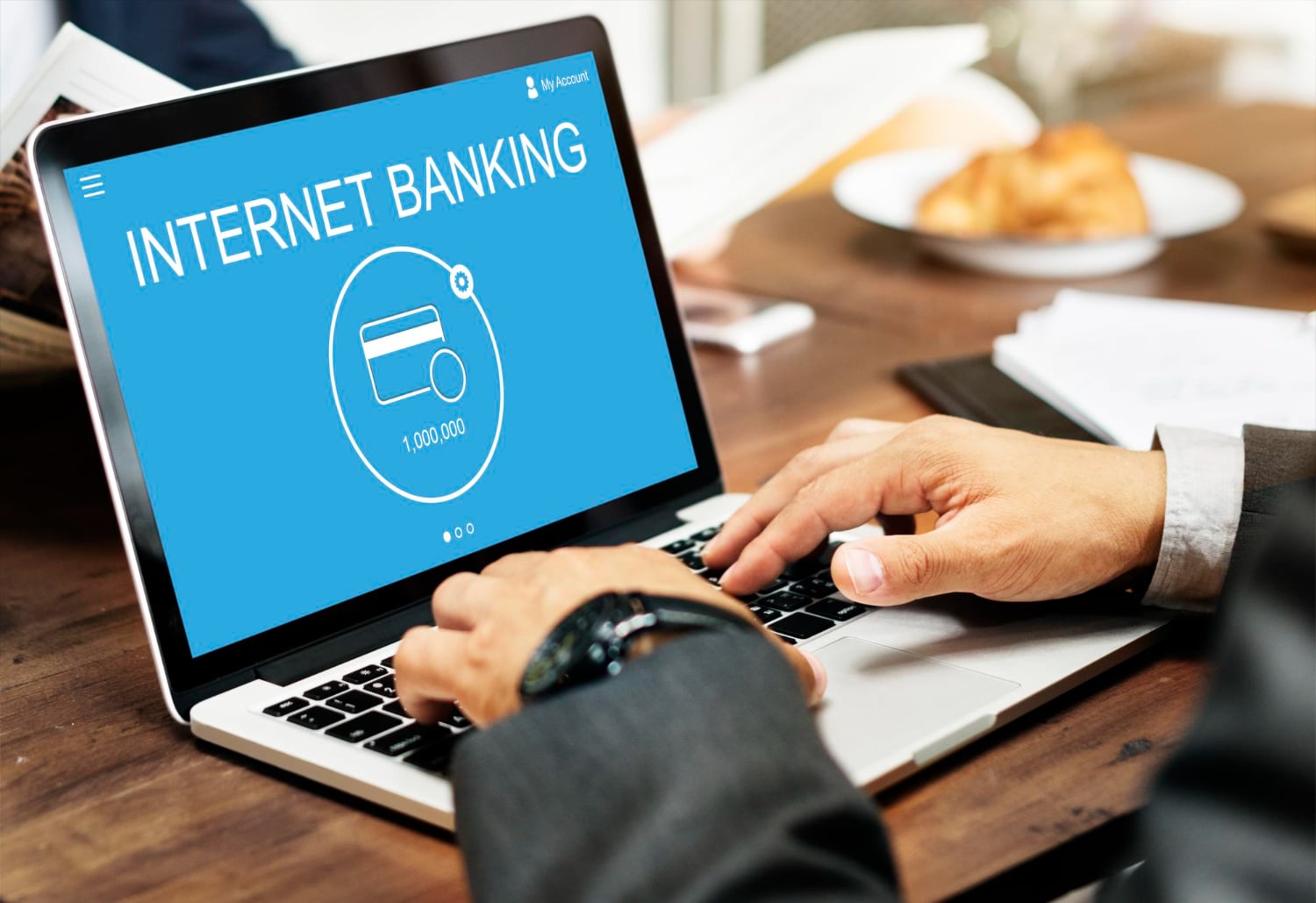Online banking: The future of financial management in a digital age

In today’s fast-paced digital world, online banking has rapidly evolved from a convenient option to an essential component of modern personal finance.
With the rise of mobile technology, fintech innovation, and the growing need for contactless solutions, more Americans are transitioning from traditional banks to digital platforms.
Whether you’re managing your savings, paying bills, or investing in the stock market, online banking has become the primary interface between consumers and their money.
This shift is not just a trend, it represents a profound transformation in how people interact with their finances.
What is online banking, and how does it work?
Online banking refers to accessing and managing bank accounts via the internet. Services offered through online platforms typically include transferring funds, paying bills, monitoring balances, depositing checks remotely, and more.
The concept is rooted in the digitization of financial services and began taking off in the late 1990s. Today, almost every bank offers some form of online banking, whether through a dedicated website, a mobile app, or both.
According to Investopedia, online banking offers 24/7 access to most banking services, allowing users to perform transactions at their convenience, without visiting a physical branch.
The user typically logs in using secure credentials and can perform all essential banking tasks — from setting up automatic payments to downloading financial statements.
The rise of online-only banks in the U.S.
Over the past decade, online-only banks — also known as neobanks — have been gaining traction in the United States. These financial institutions operate without brick-and-mortar branches, instead offering a digital-first experience.
Examples include Chime, Ally Bank, and Varo, which offer no-fee checking accounts, competitive interest rates on savings, and early access to direct deposit.
A key driver of this growth is the desire for convenience and lower fees. Traditional banks often charge maintenance and overdraft fees, while online banks can afford to offer reduced or no fees due to lower operational costs.
Advantages of online banking
There are numerous reasons why millions of Americans are embracing online banking. Perhaps the most prominent is convenience.
With mobile apps and responsive websites, users can access their accounts anytime and anywhere. This means no more waiting in lines, adhering to branch hours, or filling out paper forms.
Another major benefit is real-time monitoring. Users can check account balances instantly, receive transaction alerts, and keep track of spending habits using digital tools and dashboards.
Security has also significantly improved, with most platforms offering two-factor authentication, biometric login options, and fraud monitoring.
Online banking can also help users save money. Without the overhead of physical branches, online banks often pass the savings to customers in the form of higher interest rates on savings and lower fees.
In fact, a recent survey revealed that customers of online-only banks save significantly more on banking fees compared to those using traditional banks.
Challenges and risks of online banking
Despite its benefits, online banking isn’t without its drawbacks. One of the most cited concerns is the lack of in-person customer service.
For some users, especially older generations or those unfamiliar with technology, not being able to speak with a bank representative face-to-face can be frustrating.
Another challenge is internet security. While online banks invest heavily in cybersecurity, users must also do their part to ensure their devices and accounts remain protected.
This includes using strong passwords, avoiding public Wi-Fi for transactions, and staying vigilant for phishing attempts. A less obvious downside is the potential for technology outages.
If a mobile app crashes or a website goes down, access to your money may be temporarily restricted. Additionally, not all online-only banks offer the full range of services found at traditional institutions, such as loans, investment options, or safe deposit boxes.
How to choose the right online banking platform

When selecting an online banking provider, it’s essential to evaluate a few critical factors. These include security features, fee structures, interest rates, and ease of use. Look for banks that are FDIC-insured, meaning your deposits are protected up to $250,000.
Also, explore the mobile experience. A well-designed mobile app can make or break your banking experience.
Make sure the app supports features like mobile check deposit, budget tracking, and easy fund transfers. Read reviews and consider how responsive the bank’s customer support is — whether via chat, phone, or email.
Another consideration is integration with financial tools. Many people manage their finances using apps like Mint, YNAB, or QuickBooks.
A good online bank should integrate seamlessly with these platforms, allowing you to have a centralized view of your financial life.
A quick comparison: traditional banking vs. online banking
To better understand how online banking compares to traditional banking, here’s a summary of key differences:
| Feature | Traditional Banking | Online Banking |
| Branch Access | In-person branches available | No physical branches |
| Fees | Often higher (maintenance, etc.) | Generally lower |
| Interest Rates | Typically lower | Typically higher |
| Customer Service | Face-to-face support available | Mostly online or phone support |
| Mobile App Features | Basic in many cases | Advanced with budgeting and alerts |
| Availability | Limited to branch hours | 24/7 access |
This table illustrates that online banking is a powerful alternative for users who prioritize convenience and cost-saving.
Online banking for businesses: a growing trend
Online banking isn’t just transforming personal finance — it’s also revolutionizing business banking. From freelancers to small businesses, entrepreneurs are leveraging digital banks to manage invoices, payroll, and expenses more efficiently.
For businesses, this means faster payments, reduced fees, and streamlined financial operations.
https://www.youtube.com/watch?v=xGwq4T8A174
Security and privacy in the digital banking era
As more users migrate to online banking, security remains a top priority. Modern online banks use end-to-end encryption, biometric logins, and AI-driven fraud detection systems to protect accounts.
Still, consumers should practice good cybersecurity hygiene. This includes regularly updating software, using password managers, and enabling two-factor authentication. In addition, avoid clicking suspicious links or providing sensitive information via email or text.
Educating yourself about online banking security is crucial in preventing unauthorized access. As cyber threats evolve, so must the methods to combat them, both on the bank’s end and the user’s.

The future of online banking in the United States
The future of online banking looks incredibly promising. As technology continues to advance, we can expect smarter financial tools, AI-powered insights, and deeper personalization. Banks will likely offer services tailored to individual spending habits, savings goals, and financial health metrics.
We are already witnessing innovations such as voice-enabled banking, AI-driven customer service bots, and blockchain-based payments. These developments point to a future where banking becomes not only more accessible but also more intelligent.
Moreover, with the rise of open banking in the U.S., consumers may soon have greater control over their financial data, allowing third-party apps to provide enhanced services based on unified access to banking information.
Online banking has revolutionized the way individuals and businesses manage their money. Offering convenience, lower fees, enhanced features, and 24/7 access, it’s no surprise that digital banking has become the preferred choice for millions of Americans.
Whether you’re opening a savings account, paying a vendor, or checking your balance on your phone, the efficiency and flexibility of online banking are unmatched.
As digital platforms continue to improve and new technologies emerge, online banking will play an even more central role in financial lives. While challenges like cybersecurity and limited personal interaction remain, the advantages far outweigh the risks — especially when users stay informed and vigilant.
In a world that values speed, security, and simplicity, online banking is not just the future. It’s the present.
What did you think of this option? Did our content help you understand it? Enjoy and stay on our website for more!





